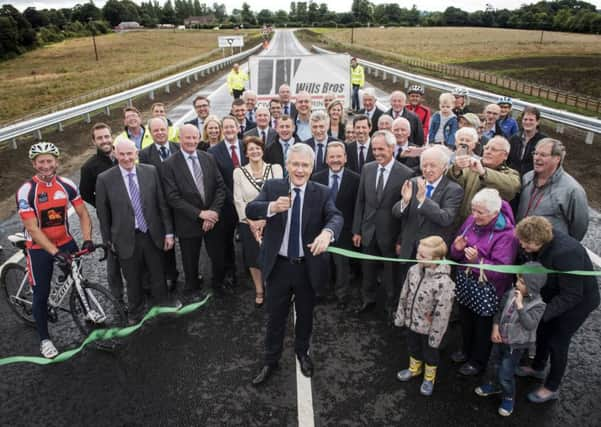Transport Talk with Don Mackenzie: Major work to improve our county's network


The last major infrastructure improvement for our area was the completion of Harrogate’s Southern Bypass in 1992. Our prime focus now is upon measures to reduce congestion in Harrogate. Subject to the views of a steering group, of a wider engagement panel, and to public opinion, there are plans to bid for funding for a relief road for the town, likely to cost up to £100m.
Elsewhere in the county, we completed two important highways schemes this month. The £34m Bedale-Aiskew-Leeming Bar bypass was officially opened by Transport Minister, Andrew Jones MP, on August 11. Andrew’s department provided much of the funding whilst the county council led the project and put in £5m. The scheme was completed early and under-budget. This three-mile long highway will bring relief to the residents of the three communities from 14,000 vehicles passing through every day. It will also benefit the economy of the Northern Dales by improving road links between them and the A1, which is itself being upgraded. By this time next year all of the A1 will have been raised to motorway status right through our county.
Advertisement
Hide AdAdvertisement
Hide AdThe county has responsibility for almost 2,000 bridges, two of which are currently being repaired and improved.
Tadcaster Bridge, which suffered partial collapse after continuous, heavy rain in December, is currently being re-built. We received £3m from Government for repairs to this 18th century listed structure, and also submitted a planning application to Selby District Council for permission to widen the bridge in order to provide better facilities for pedestrians. The county council made a successful bid for £1.4m for this improvement to the York, North Yorkshire and East Riding LEP.
We made a second bid for major upgrading of Dalton Bridge and the highway leading to it. The bridge and highway, which provide the only access to the Dalton Industrial Estate near Topcliffe, regularly flood. The bid was successful and the £3.5m scheme, partly funded by local businesses, will replace the bridge and raise the highway above the flood level. This will be a huge boost to the local economy as new industries come to the estate.
Bus stops and congestion
Occasionally bus stops can cause traffic hold-ups because of their location. A workable remedy is not always easy: the bus stop on Leeds Road just south of the Price of Wales Roundabout is typical of the problem, since creating a layby for the bus stop would mean taking protected Stray land. Highways officers are currently looking at re-positioning two bus stops: on Ripon Road opposite the Royal Hall, and on Bower Road outside Asda. The former is of particular concern because a bus at the stop can block traffic heading north, causing additional congestion at one of the town’s busiest junctions at the bottom of Parliament Street.
Accident blackspot
Advertisement
Hide AdAdvertisement
Hide AdEarlier this year we put up a new sign just past the Buttersyke Bar roundabout for traffic heading towards town, reminding drivers to cancel their left-turn indicator if it does not automatically switch off. There have been collisions with vehicles turning right out of Burn Bridge Lane.
There was yet another serious collision earlier this month, apparently caused by failure to cancel the indicator. Drivers: please heed the sign!
Air quality
There have been two declared AQMAs in the borough in recent years where nitrogen dioxide (NO2) levels have been recorded above safe limits: Bond End in Knaresborough and Skellgate in Ripon. Whilst air quality is the responsibility of Harrogate Borough Council, the borough and the county councils work in close partnership to take action to bring such areas back within safe limits for local residents. Two further areas have recently been added: Woodlands Corner in Harrogate and York Place in Knaresborough. The causes include emissions from vehicles, especially when queuing at traffic lights, and the “canyon effect” of adjacent buildings, which slow the dispersal of exhaust gases.
Whilst much work is taking place at both councils, the county council will shortly be announcing proposals to change Bond End traffic arrangements in an effort to make the complex junction work more efficiently.
Funding for measures which need to be taken for all these areas has been boosted recently with the decision to allocate £100,000 every year from on-street parking surpluses to AQMAs.